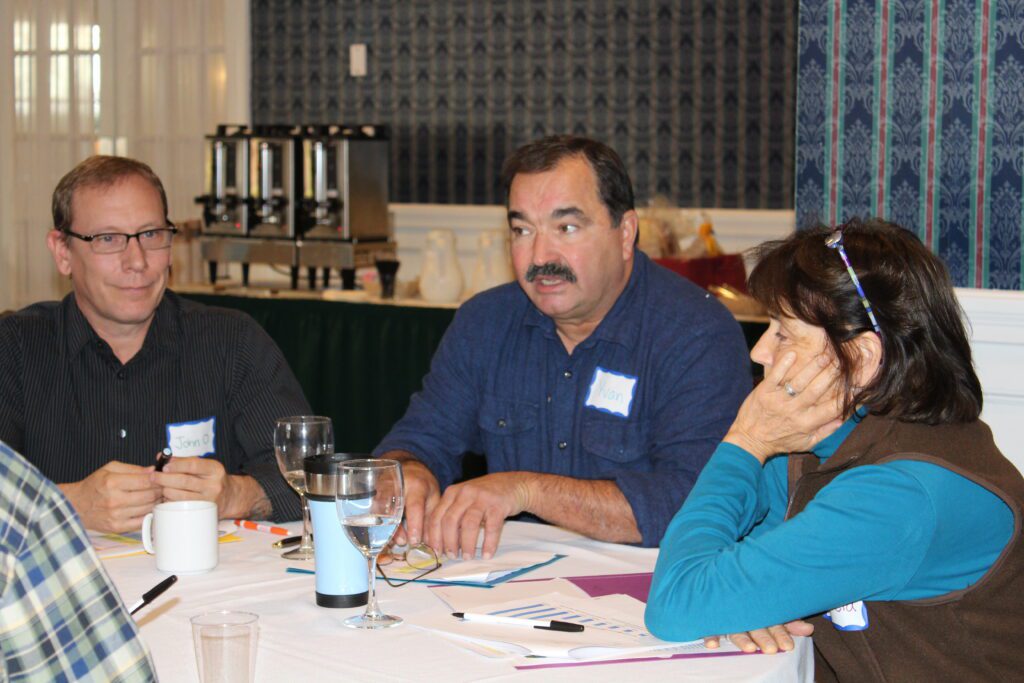As rates rise, members lose incentive to switch from fossil fuels to electric
As a cooperative electric utility with an environmental mission, WEC exists in a mixed landscape of not-for-profits, for-profits, and state goals and mandates, all working to change Vermonters’ behavior. While all are aiming to reduce emissions and fossil fuel use, “we’re running at cross purposes in getting to beneficial electrification,” said WEC’s former Board President Barry Bernstein. “You can’t shift people away from fossil fuels when electricity is expensive.”
One problem Bernstein has pointed to repeatedly over the years is that at a section of grid (the SHEI, or Sheffield-Highgate Export Interface) in the Northeast Kingdom, where renewable power is produced at WEC’s landfill gas plant at Coventry and at wind projects, there just isn’t enough transmission capacity to move the power from where it’s generated to where it’s needed. So when new net metering switches on in that region, it’s not a coal plant that switches off – it’s a windmill. Curtailing existing renewable generation also loses money for those projects’ investors, like WEC. “It’s counterproductive,” he said.
Another problem, Bernstein says, is that WEC power is already 100% renewable, long before Vermont’s Renewable Energy Standard required utilities to increase renewable power in their portfolios. But it’s still required to pay retail for power generated by net metering arrays added to its grid. In addition to shifting infrastructure costs to ratepaying members, he said, the expense for redundant renewable power makes it hard to keep rates low, which makes electricity a harder commodity to sell.
So WEC must pay retail for redundant power it can not store, and the money to pay for it comes from members’ rates. WEC redesigned its rates in order to make electricity a more affordable alternative to fossil fuels, but those lowered rates are now rising. “Net metering is not the only driver to rate increases, but increasingly it is a major driver in rate increases,” observed WEC Board Treasurer Don Douglas.
In the Public Utility Commission’s (PUC) 2022 biennial update to Vermont’s net metering program, the commission reduced the compensation for new installations, in order to slow the pace of growth, and slightly increased the compensation for existing installations. The Commission acknowledged that net metering is “the costliest of the State’s renewable energy programs, and that the pace of net-metering installations far exceeds the pace of other less costly renewable energy projects.” Even though Standard Offer and utility-sourced solar were far less expensive, the update pointed to more than 28 megawatts of net metering connected in 2021 – almost triple the megawatts of the other two types of renewable projects.
“This trend toward many more net-metered projects ultimately increases rates for Vermonters who do not or are unable to participate in the net-metering program,” read the update.

In 2017, WEC members participated in listening groups to offer feedback on the Co-op’s rate restructure. From Co-op Currents: “They also voiced catch-22s created by Vermont’s renewable goals. Yvan LeBlanc of Williamstown said, “I’m considered a high user. I’ve gone to LED lights. I burn wood. For someone to tell me I need to use more electricity, there’s only one thing that can make me do that: that’s if the cost of electricity is cheaper than buying oil.” He suggested the state’s well-intended policies force Co-op members to subsidize the renewable industry at large, in the form of incentives to install net metering funded by the member-owned utility, and rate increases that apply only to members who must buy energy from the Co-op. The unintended consequence of this, he said, results in keeping oil cheaper than electricity for members who don’t or can’t install solar. “The logic is good, but the practice doesn’t make sense,” he said.” (“Listening to Consensus,” January 2018)
